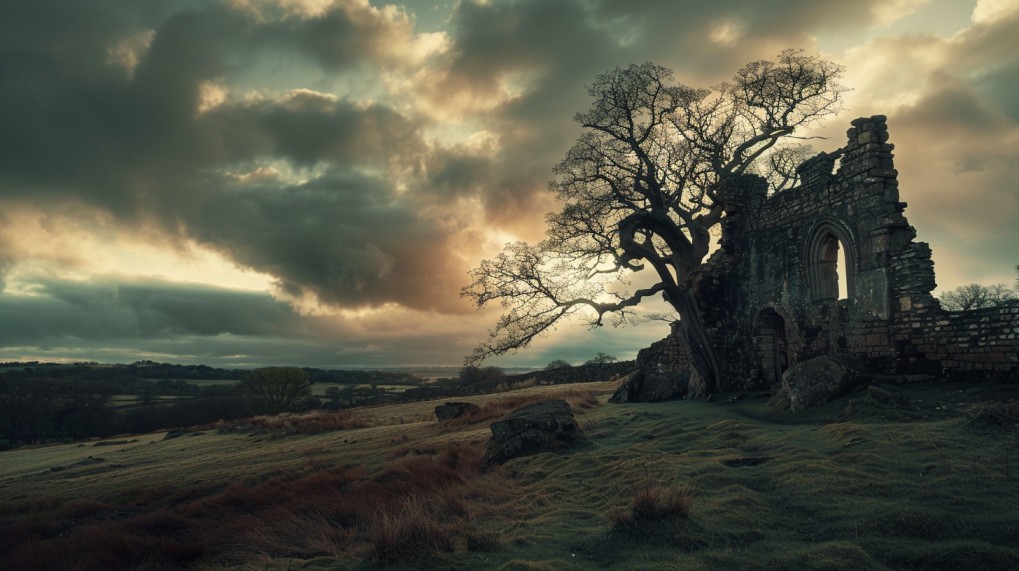Bradgate Park, nestled in the heart of Leicestershire, England, is a true gem for nature enthusiasts and history buffs alike. At the heart of this stunning 850-acre park lies a remarkable collection of ancient oak trees, some of which have stood tall for over 800 years, serving as living testaments to the park’s rich history and ecological significance.
The Oldest Oaks of Bradgate Park
The oldest oak tree in Bradgate Park is estimated to be over 800 years old, with a girth exceeding 8.57 meters. This ancient giant, along with several other centenarian oaks, is found within the medieval boundaries of the park, a testament to the park’s long-standing history as a medieval deer park, Tudor residence, and countryside sporting venue.
| Tree Age | Girth (meters) |
|---|---|
| 800+ years | 8.57 |
| 700+ years | 7.92 |
| 600+ years | 7.31 |
These majestic trees have witnessed the ebb and flow of time, surviving through centuries of change and serving as a living link to the park’s past. Their presence not only adds to the park’s natural beauty but also provides valuable insights into the region’s ecological history and the resilience of these remarkable species.
The Importance of Bradgate Park’s Ancient Oaks

The ancient oaks in Bradgate Park are not just impressive in their size and age; they are also an integral part of the park’s ecosystem and cultural heritage. These trees provide vital habitats for a diverse array of wildlife, including birds, insects, and small mammals, contributing to the overall biodiversity of the park.
Moreover, the recording of these trees on the Woodland Trust’s Ancient Tree Inventory (ATI) has helped to enhance the park’s knowledge and understanding of its ancient trees and ecosystems. This information is crucial for the long-term conservation and management of these precious natural resources.
Legends and Lore of the Bradgate Park Oaks
In addition to their natural and historical significance, the oak trees of Bradgate Park are also the subject of various legends and stories. One such legend suggests that the trees were “pollarded” (a pruning technique used to encourage new growth) upon the news of Lady Jane Grey’s execution. Lady Jane Grey, who lived at Bradgate House within the park, was the “Nine Day Queen” of England in 1553.
These legends and stories add to the park’s rich cultural tapestry, inviting visitors to explore the park’s past and imagine the lives and events that have unfolded beneath the boughs of these ancient giants.
Exploring Bradgate Park’s Woodland Wonders
Visitors to Bradgate Park can enjoy a variety of activities, including walking, picnicking, and learning about the park’s history and geology at the visitor center and Deer Barns café. The park is open all year, and welcomes approximately 900,000 visitors annually, all eager to experience the natural beauty and historical significance of this remarkable place.
As you wander through the park, be sure to take the time to appreciate the ancient oaks that stand as silent sentinels, guarding the secrets of Bradgate’s past. These trees are not just a natural wonder; they are a living connection to the park’s rich history and a testament to the resilience and endurance of the natural world.
Conclusion
Bradgate Park’s ancient oak trees are a true treasure, offering visitors a unique opportunity to connect with the past and immerse themselves in the natural beauty of this remarkable place. Whether you’re a nature enthusiast, a history buff, or simply someone who appreciates the wonder of the natural world, a visit to Bradgate Park and its majestic oaks is sure to leave a lasting impression.
References:
– The Beheaded Oaks of Bradgate Park
– Woodland Veteran Trees Walk
– Unveiling the Hidden Oak Tree Treasures
– Lady Jane Grey
– Bradgate Park

